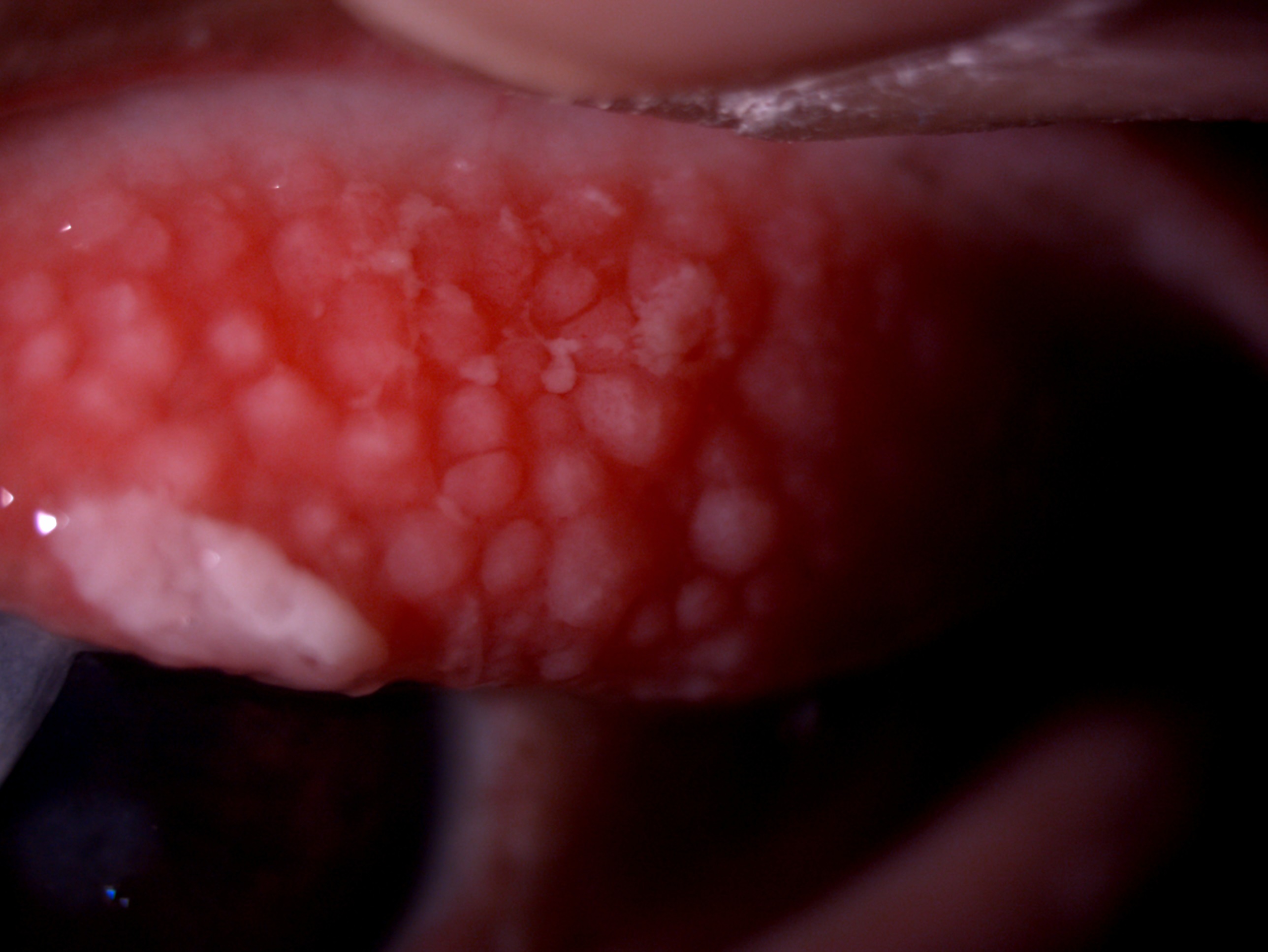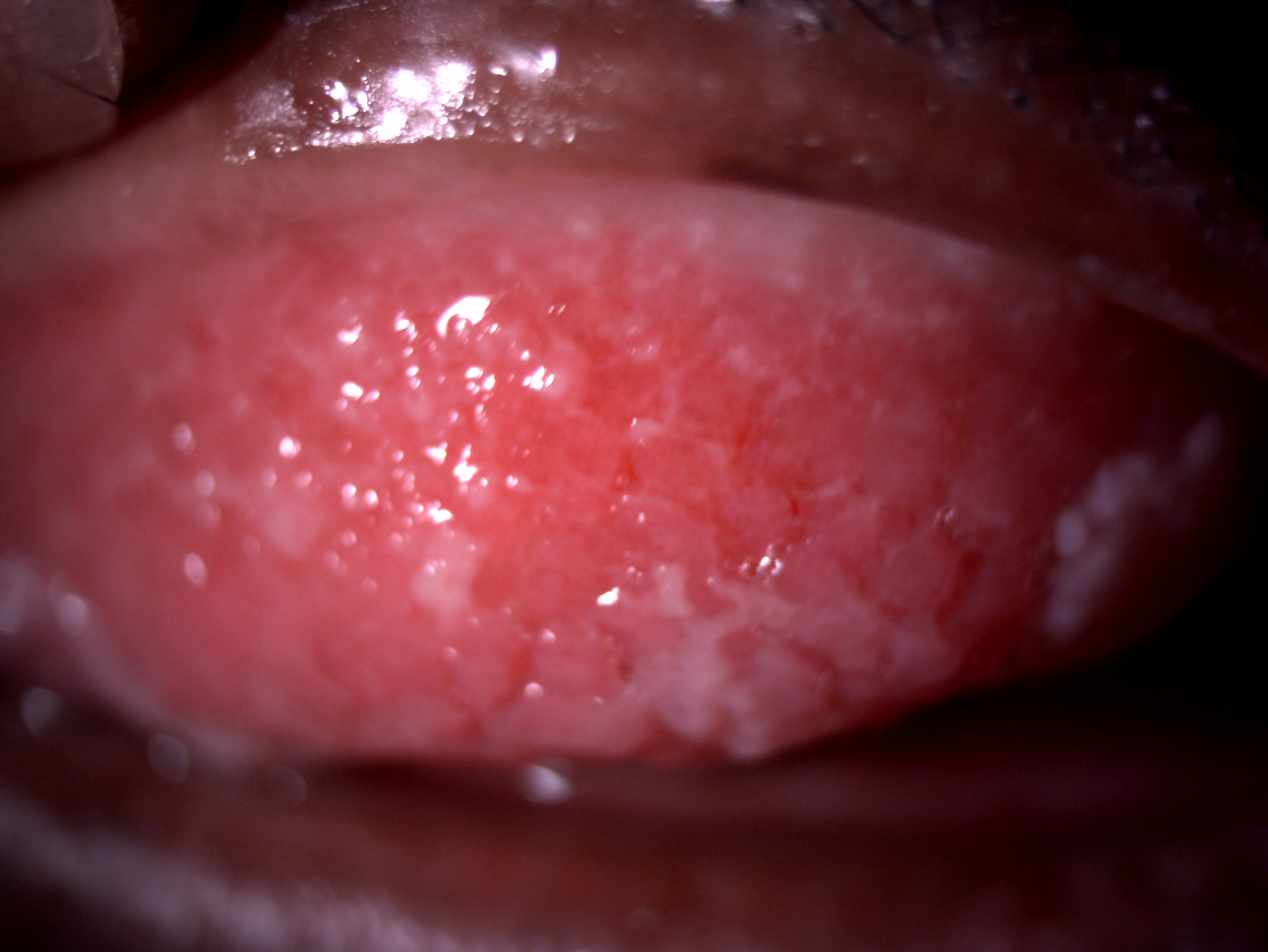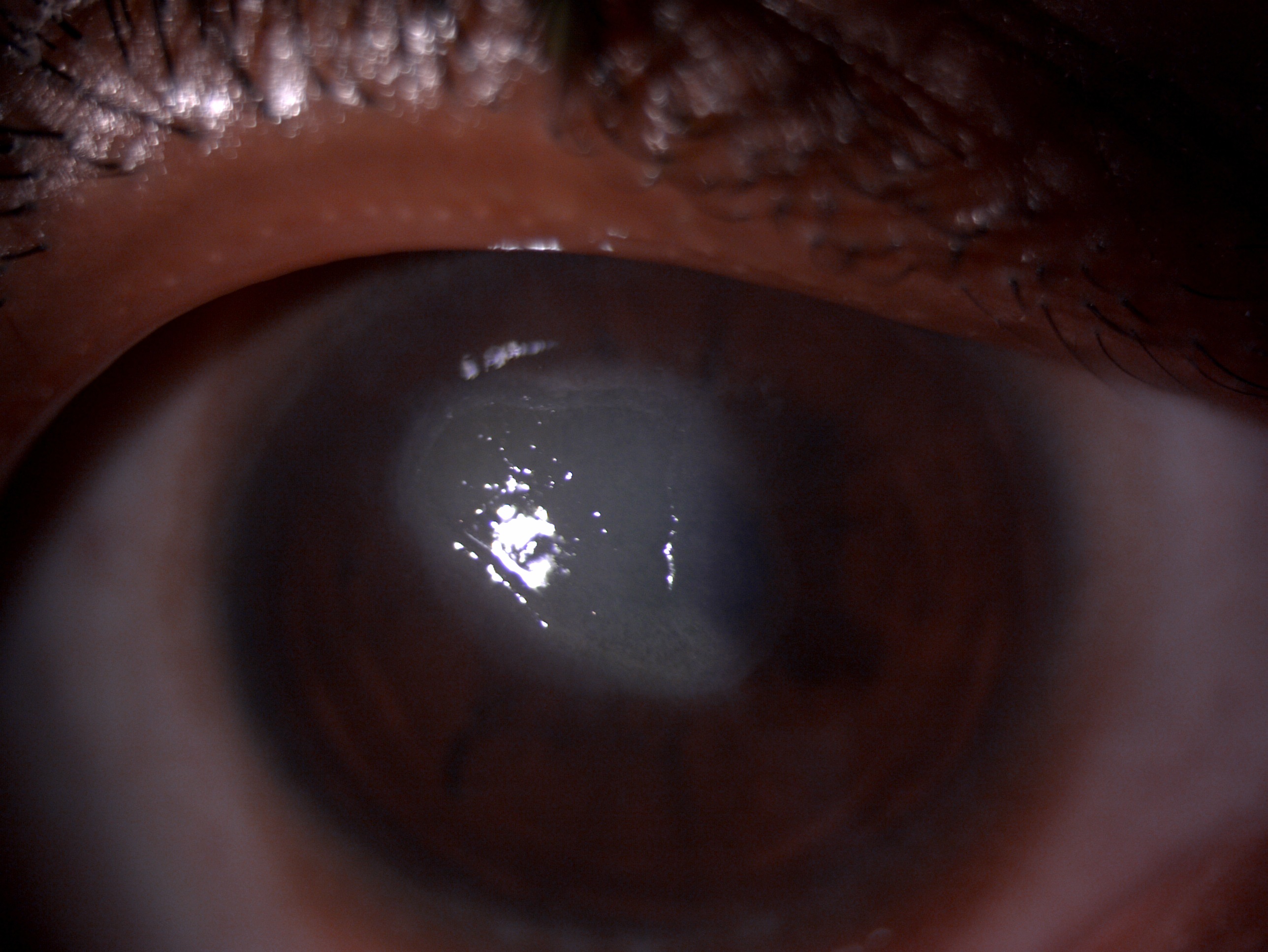[1]
Oray M,Toker E, Tear cytokine levels in vernal keratoconjunctivitis: the effect of topical 0.05% cyclosporine a therapy. Cornea. 2013 Aug;
[PubMed PMID: 23676782]
[2]
Vichyanond P,Kosrirukvongs P, Use of cyclosporine A and tacrolimus in treatment of vernal keratoconjunctivitis. Current allergy and asthma reports. 2013 Jun;
[PubMed PMID: 23625179]
[3]
Barot RK,Shitole SC,Bhagat N,Patil D,Sawant P,Patil K, Therapeutic effect of 0.1% Tacrolimus Eye Ointment in Allergic Ocular Diseases. Journal of clinical and diagnostic research : JCDR. 2016 Jun;
[PubMed PMID: 27504320]
[4]
Wan Q,Tang J,Han Y,Wang D,Ye H, Therapeutic Effect of 0.1% Tacrolimus Eye Drops in the Tarsal Form of Vernal Keratoconjunctivitis. Ophthalmic research. 2018;
[PubMed PMID: 28803239]
[5]
Leonardi A. Management of vernal keratoconjunctivitis. Ophthalmology and therapy. 2013 Dec:2(2):73-88. doi: 10.1007/s40123-013-0019-y. Epub 2013 Sep 7
[PubMed PMID: 25135808]
[6]
Alemayehu AM,Yibekal BT,Fekadu SA, Prevalence of vernal keratoconjunctivitis and its associated factors among children in Gambella town, southwest Ethiopia, June 2018. PloS one. 2019;
[PubMed PMID: 30998721]
[7]
Leonardi A, Vernal keratoconjunctivitis: pathogenesis and treatment. Progress in retinal and eye research. 2002 May;
[PubMed PMID: 12052387]
[8]
Bremond-Gignac D,Donadieu J,Leonardi A,Pouliquen P,Doan S,Chiambarretta F,Montan P,Milazzo S,Hoang-Xuan T,Baudouin C,Aymé S, Prevalence of vernal keratoconjunctivitis: a rare disease? The British journal of ophthalmology. 2008 Aug;
[PubMed PMID: 18356259]
[9]
Nebbioso M,Zicari AM,Celani C,Lollobrigida V,Grenga R,Duse M, Pathogenesis of Vernal Keratoconjunctivitis and Associated Factors. Seminars in ophthalmology. 2015;
[PubMed PMID: 24571721]
[10]
Brindisi G,Cinicola B,Anania C,De Castro G,Nebbioso M,Miraglia Del Giudice M,Licari A,Caffarelli C,De Filippo M,Cardinale F,Duse M,Zicari AM, Vernal keratoconjunctivitis: state of art and update on treatment. Acta bio-medica : Atenei Parmensis. 2021 Nov 29;
[PubMed PMID: 34842588]
[11]
Lai B,Phan K,Lewis N,Shumack S, A rare case of vernal keratoconjunctivitis in a patient with atopic dermatitis treated with tralokinumab. Journal of the European Academy of Dermatology and Venereology : JEADV. 2021 Nov 22;
[PubMed PMID: 34807480]
Level 3 (low-level) evidence
[12]
Zengarini C,Roda M,Schiavi C,Bruni F,Bardazzi F,Bellusci C,Raone B, Successful treatment of severe recalcitrant vernal keratoconjunctivitis and atopic dermatitis associated with elevated IgE levels with omalizumab. Clinical and experimental dermatology. 2021 Nov 3;
[PubMed PMID: 34731495]
[13]
Bonini S,Bonini S,Lambiase A,Marchi S,Pasqualetti P,Zuccaro O,Rama P,Magrini L,Juhas T,Bucci MG, Vernal keratoconjunctivitis revisited: a case series of 195 patients with long-term followup. Ophthalmology. 2000 Jun;
[PubMed PMID: 10857837]
Level 2 (mid-level) evidence
[14]
Jeng BH, Whitcher JP, Margolis TP. Pseudogerontoxon. Clinical & experimental ophthalmology. 2004 Aug:32(4):433-4
[PubMed PMID: 15281982]
[15]
Turgut B,Kurt J,Catak O,Demir T, Phthriasis palpebrarum mimicking lid eczema and blepharitis. Journal of ophthalmology. 2009;
[PubMed PMID: 20339456]
[16]
Leonardi A,Lazzarini D,La Gloria Valerio A,Scalora T,Fregona I, Corneal staining patterns in vernal keratoconjunctivitis: the new VKC-CLEK scoring scale. The British journal of ophthalmology. 2018 Oct;
[PubMed PMID: 29367201]
[17]
Umale RH,Khan MA,Moulick PS,Gupta S,Shankar S,Sati A, A clinical study to describe the corneal topographic pattern and estimation of the prevalence of keratoconus among diagnosed cases of vernal keratoconjunctivitis. Medical journal, Armed Forces India. 2019 Oct;
[PubMed PMID: 31719737]
Level 3 (low-level) evidence
[18]
Bonini S,Schiavone M,Bonini S,Magrini L,Lischetti P,Lambiase A,Bucci MG, Efficacy of lodoxamide eye drops on mast cells and eosinophils after allergen challenge in allergic conjunctivitis. Ophthalmology. 1997 May;
[PubMed PMID: 9160033]
[19]
La Rosa M,Lionetti E,Reibaldi M,Russo A,Longo A,Leonardi S,Tomarchio S,Avitabile T,Reibaldi A, Allergic conjunctivitis: a comprehensive review of the literature. Italian journal of pediatrics. 2013 Mar 14;
[PubMed PMID: 23497516]
[20]
D'Angelo G,Lambiase A,Cortes M,Sgrulletta R,Pasqualetti R,Lamagna A,Bonini S, Preservative-free diclofenac sodium 0.1% for vernal keratoconjunctivitis. Graefe's archive for clinical and experimental ophthalmology = Albrecht von Graefes Archiv fur klinische und experimentelle Ophthalmologie. 2003 Mar;
[PubMed PMID: 12644942]
[22]
Pucci N,Novembre E,Cianferoni A,Lombardi E,Bernardini R,Caputo R,Campa L,Vierucci A, Efficacy and safety of cyclosporine eyedrops in vernal keratoconjunctivitis. Annals of allergy, asthma
[PubMed PMID: 12269651]
[23]
Leonardi A,Borghesan F,DePaoli M,Plebani M,Secchi AG, Procollagens and inflammatory cytokine concentrations in tarsal and limbal vernal keratoconjunctivitis. Experimental eye research. 1998 Jul;
[PubMed PMID: 9702183]
[24]
Lambiase A,Bonini S,Rasi G,Coassin M,Bruscolini A,Bonini S, Montelukast, a leukotriene receptor antagonist, in vernal keratoconjunctivitis associated with asthma. Archives of ophthalmology (Chicago, Ill. : 1960). 2003 May;
[PubMed PMID: 12742837]
[25]
de Klerk TA,Sharma V,Arkwright PD,Biswas S, Severe vernal keratoconjunctivitis successfully treated with subcutaneous omalizumab. Journal of AAPOS : the official publication of the American Association for Pediatric Ophthalmology and Strabismus. 2013 Jun;
[PubMed PMID: 23607979]
[26]
Doan S,Amat F,Gabison E,Saf S,Cochereau I,Just J, Omalizumab in Severe Refractory Vernal Keratoconjunctivitis in Children: Case Series and Review of the Literature. Ophthalmology and therapy. 2017 Jun;
[PubMed PMID: 27909980]
Level 2 (mid-level) evidence
[27]
Tabbara KF, Ocular complications of vernal keratoconjunctivitis. Canadian journal of ophthalmology. Journal canadien d'ophtalmologie. 1999 Apr;
[PubMed PMID: 10321319]
[29]
De Smedt S,Wildner G,Kestelyn P, Vernal keratoconjunctivitis: an update. The British journal of ophthalmology. 2013 Jan;
[PubMed PMID: 23038763]
[30]
NEUMANN E,GUTMANN MJ,BLUMENKRANTZ N,MICHAELSON IC, A review of four hundred cases of vernal conjunctivitis. American journal of ophthalmology. 1959 Feb;
[PubMed PMID: 13617386]
Level 3 (low-level) evidence
[31]
Cameron JA. Shield ulcers and plaques of the cornea in vernal keratoconjunctivitis. Ophthalmology. 1995 Jun:102(6):985-93
[PubMed PMID: 7777308]
[32]
AlHarkan DH, Management of vernal keratoconjunctivitis in children in Saudi Arabia. Oman journal of ophthalmology. 2020 Jan-Apr;
[PubMed PMID: 32174733]
[33]
Chatterjee A, Bandyopadhyay S, Kumar Bandyopadhyay S. Efficacy, Safety and Steroid-sparing Effect of Topical Cyclosporine A 0.05% for Vernal Keratoconjunctivitis in Indian Children. Journal of ophthalmic & vision research. 2019 Oct-Dec:14(4):412-418. doi: 10.18502/jovr.v14i4.5439. Epub 2019 Oct 24
[PubMed PMID: 31875095]
[34]
Sacchetti M, Plateroti R, Bruscolini A, Giustolisi R, Marenco M. Understanding Vernal Keratoconjunctivitis: Beyond Allergic Mechanisms. Life (Basel, Switzerland). 2021 Sep 26:11(10):. doi: 10.3390/life11101012. Epub 2021 Sep 26
[PubMed PMID: 34685384]
Level 3 (low-level) evidence
[35]
Carr W,Schaeffer J,Donnenfeld E, Treating allergic conjunctivitis: A once-daily medication that provides 24-hour symptom relief. Allergy
[PubMed PMID: 27466061]
[36]
Tuft SJ,Cree IA,Woods M,Yorston D, Limbal vernal keratoconjunctivitis in the tropics. Ophthalmology. 1998 Aug;
[PubMed PMID: 9709763]
[37]
Sen P,Jain S,Mohan A,Shah C,Sen A,Jain E, Pattern of steroid misuse in vernal keratoconjunctivitis resulting in steroid induced glaucoma and visual disability in Indian rural population: An important public health problem in pediatric age group. Indian journal of ophthalmology. 2019 Oct;
[PubMed PMID: 31546501]
[38]
Riad SF,Dart JK,Cooling RJ, Primary care and ophthalmology in the United Kingdom. The British journal of ophthalmology. 2003 Apr;
[PubMed PMID: 12642317]


